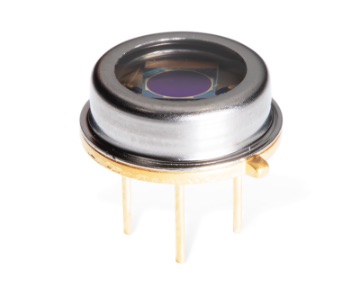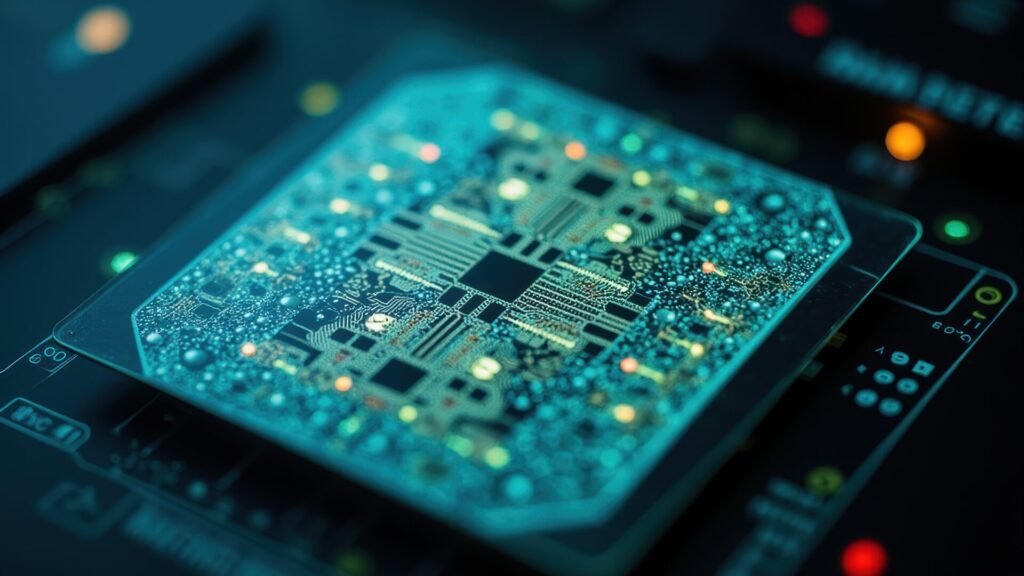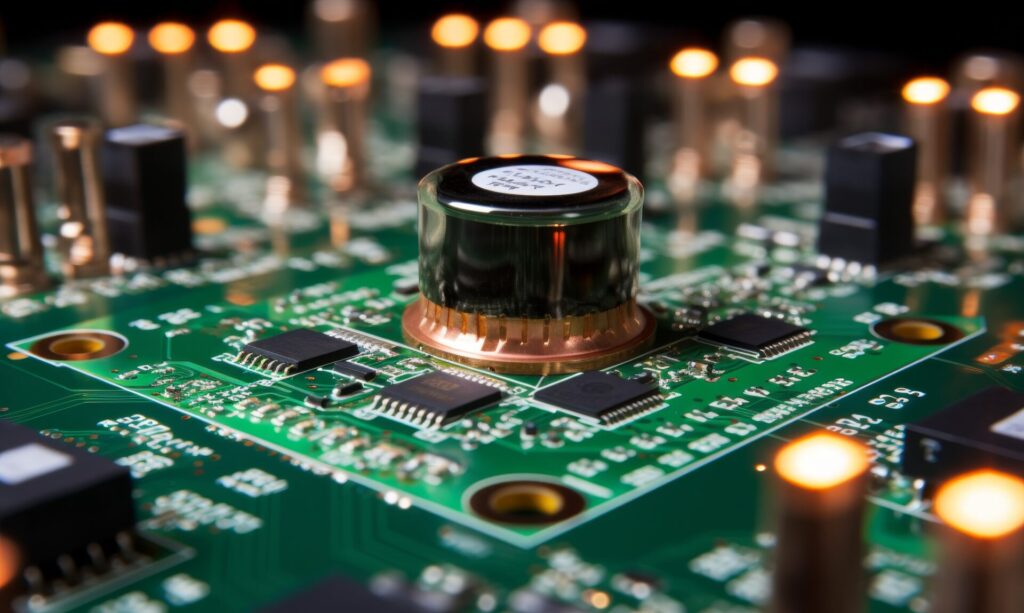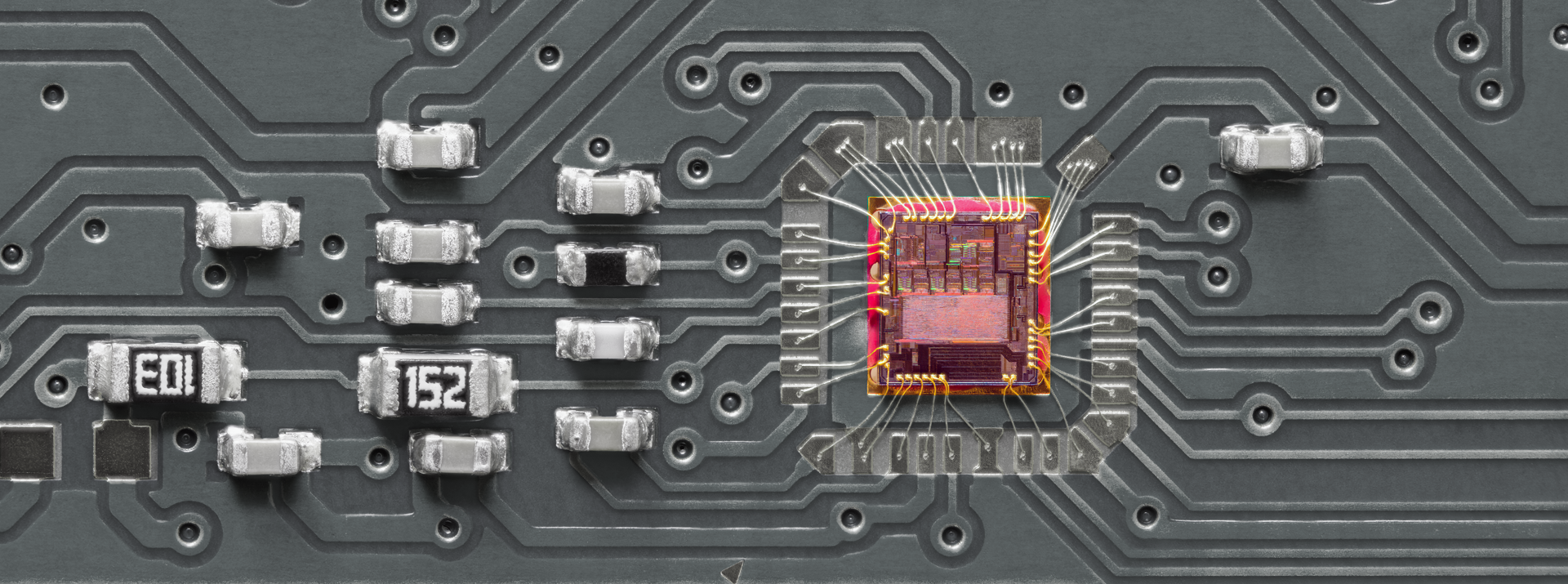
- Photonics
Optical Transceiver Fundamentals and Recent Trends
Contents
Optical transceivers: devices that support high-speed optical communications
Optical transceivers are devices that convert electrical signals into optical signals and vice versa, playing a key role in supporting modern high-speed communication networks. They are widely used in data centers and communication systems to enable high-speed, efficient transmission of large amounts of data. In this article, we will discuss the basics of optical transceivers that support optical data centers as well as recent trends.
At the core of a data center are the servers lined up in server racks. Each server contains optical network interface cards (NICs), and the NICs in turn have optical transceivers that enable high-speed communication with servers and other network devices. Network switches, which control traffic within data centers and transmit data between servers and network segments, contain many optical transceivers. These switches are usually placed above racks or in dedicated network racks.
のイメージ図-1.png)
The operating principles of an optical transceiver are relatively simple. On the sending side, a semiconductor laser diode is used to convert an electrical signal into an optical signal. This laser diode modulates light intensity based on the input electrical signal to send a signal to an optical fiber. Then on the receiving side, a photodiode converts the optical signal from the optical fiber into an electrical signal. After the photodiode converts incoming light into electrical current, the current is amplified and the original electrical signal is restored through digital signal processing.
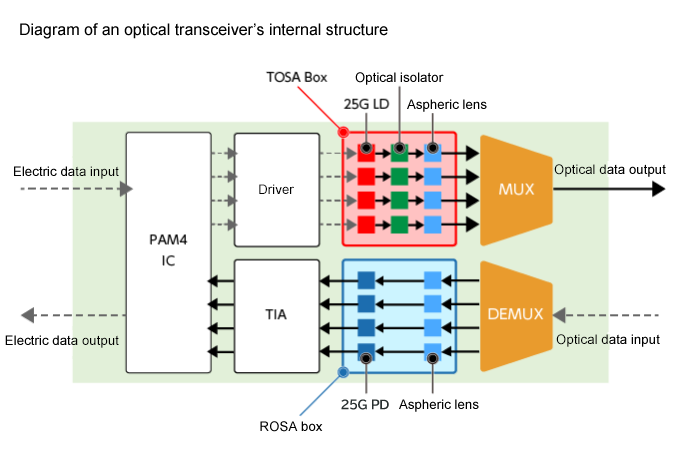
Optical transceivers are widely used in data centers, telecommunications providers’ networks, large corporate networks, and more. In these environments, optical communication is indispensable for high-speed transmission of large amounts of data over long distances. Specific use cases include internet service providers, cloud computing, 5G mobile networks, big data analysis, and streaming services. Due to these services’ need for high-speed, reliable data transmission, optical transceiver performance directly affects service quality.
Photodiodes: the heart of optical transceivers
The performance of a photodiode, the heart of an optical transceiver, depends largely on its structure and material selection. Commonly used photodiode structures include PIN (positive-intrinsic-negative) and avalanche photodiodes (APD). PIN structures offer high response speed and low noise and are widely used in many optical transceivers. APD structures, on the other hand, internally amplify photocurrent. This enables high-responsivity detection, but requires high operating voltage and results in more noise. Materials such as silicon (Si), germanium (Ge), and indium gallium arsenide (InGaAs) are used, and each provides optimal performance at different wavelength bands.
History of optical transceiver standards
Standards for optical transceivers have evolved along with the progress and demands of communication technology. Early optical transceivers had low speeds and large form factors, but they are continuing to grow smaller, faster, and more energy efficient in recent years. Some representative standards are SFP (small form-factor pluggable), SFP+, QSFP (quad small form-factor pluggable), QSFP28, and CFP (C form-factor pluggable). They define specifications such as data rate, size, power consumption, and transmission distance to ensure compatibility across different vendors.
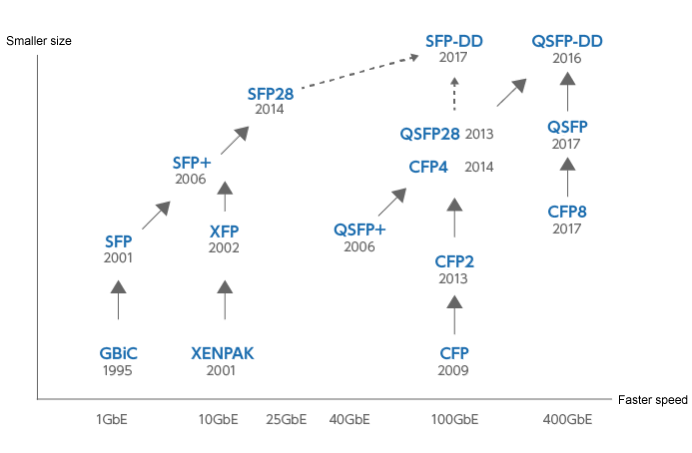
| SFP | QSFP | OSFP | CFP | |
|---|---|---|---|---|
| 1G | SFP | – | – | – |
| 10G | SFP+ | – | – | – |
| 25G | SFP28 | – | – | – |
| 40G | – | QSFP+ | – | CFP |
| 50G | SFP56 | – | – | – |
| 100G | SFP-DD | QSFP28 | – | CFP,CFP2,CFP4 |
| 200G | – | QSFP56 | – | – |
| 400G | – | QSFP-DD | OSFP | CFP8 |
The newest optical transceiver technologies aim for further improvements in high speed and high density. For example, optical transceivers that achieve transmission speeds of 400 Gbps and 800 Gbps have been developed, and progress is being made toward practical implementation. These high-speed transceivers also leverage integration using silicon photonics technology to enable significantly smaller form factors and integration with electronic circuits. (Reference: https://xtech.nikkei.com/atcl/nxt/column/18/00001/08659/)(JP)
Another key technology trend is improved energy efficiency. As data center power consumption continues to increase, reducing optical transceiver power consumption has become an important challenge. Ongoing efforts to take on this challenge include efficient light source and light receiver development, low-power electrical circuit designs, and heat design optimization.
The outlook for the optical transceiver market is said to be extremely promising. The worldwide market size is expected to grow from 13.6B USD in 2024 to 25B USD in 2029, an average annual growth rate of 13.0%. (Reference: https://www.gii.co.jp/report/mama1459082-optical-transceiver-market-by-form-factor-sff-sfp.html)(JP)
And with 6G communication, explosive growth of IoT (Internet of Things) devices, and increased data traffic from widespread AI and machine learning on the horizon, the demand for high-speed, high-volume communication is expected to increase exponentially. Optical transceiver technology is expected to evolve further to meet this demand.
Optical transceiver technology is an important foundational technology that supports our information society. As it evolves, it has the potential to bring major changes to the way we live and work. By bringing technological innovation to the photodiode at the heart of the optical transceiver, Dexerials aims to pioneer a richer future for communication.
- SHARE
 Back to top
Back to top  Contact us
Contact us 


